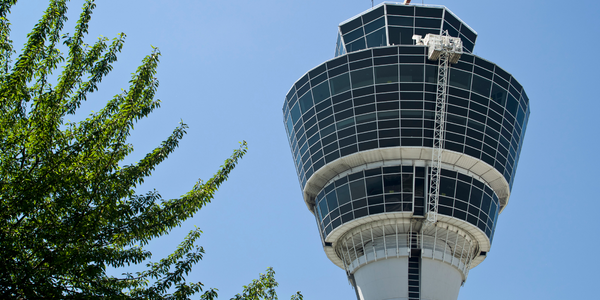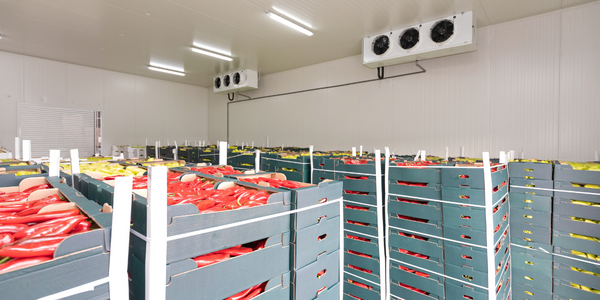.png)
Technology Category
- Analytics & Modeling - Machine Learning
- Analytics & Modeling - Predictive Analytics
Applicable Industries
- Consumer Goods
- Transportation
Applicable Functions
- Logistics & Transportation
- Warehouse & Inventory Management
Use Cases
- Public Transportation Management
- Real-Time Location System (RTLS)
Services
- Data Science Services
- System Integration
The Customer
Consumer Packaged Goods (CPG)
About The Customer
The customer is a Global 50 Consumer Packaged Goods (CPG) company that averages 25,000 North American truck shipments per month. The company was struggling with a lack of real-time monitoring of inventory in-transit, which led to operational inefficiencies and customer dissatisfaction due to late or non-delivery of goods. The company's new strategic cross-docking network was underperforming due to inaccurate inbound Estimated Time of Arrivals (ETAs), and their TMS and ERP systems were not receiving real-time information, leading to a manual and error-prone process of updating ETAs.
The Challenge
A Global 50 Consumer Packaged Goods (CPG) company was facing significant challenges with its North American truck shipments, averaging 25,000 per month. The company lacked a system for real-time monitoring of inventory in-transit, leaving operation team members in the dark about real-time disruptions and unable to prevent or mitigate late or non-delivery for their customers. The company's new strategic cross-docking network was underperforming due to inaccurate inbound Estimated Time of Arrivals (ETAs), which reduced the number of goods that could be cross-docked. The company's Transportation Management System (TMS) and Enterprise Resource Planning (ERP) systems were not receiving real-time information and rarely received shipment plan updates. Consequently, the company had to employ hundreds of people to manually update ETAs by making check calls to carriers, drivers, and customers. This manual process was not only time-consuming and error-prone but also latent, with disruption reports often received well after they occurred.
The Solution
The CPG company partnered with Savi to implement Savi Visibility™, a live streaming in-transit tracking and ETA solution. The company asked their truck carriers to send Electronic Data Interchange (EDI) and telematics feeds to Savi, while Savi set up an automated feed from and to the company's TMS to log planned shipments. After ingesting the data from the carriers and the TMS, Savi's machine learning platform used Artificial Intelligence (AI) to build algorithms that could predict both inbound and outbound ETAs with much higher accuracy. The Savi Visibility user interface provided map, list, and reporting views of the real-time status of all shipments. Predictive alerts, such as “Trending Late” and “Trending Early,” were determined using customer-specific thresholds of time, distance, and amount predicted late. Predictive ETAs and alerts were sent to users and the ERP system, enabling synchronization between TMS, Warehouse Management System (WMS), and yard management operations.
Operational Impact
Quantitative Benefit

Case Study missing?
Start adding your own!
Register with your work email and create a new case study profile for your business.
Related Case Studies.
.png)
Case Study
Improving Vending Machine Profitability with the Internet of Things (IoT)
The vending industry is undergoing a sea change, taking advantage of new technologies to go beyond just delivering snacks to creating a new retail location. Intelligent vending machines can be found in many public locations as well as company facilities, selling different types of goods and services, including even computer accessories, gold bars, tickets, and office supplies. With increasing sophistication, they may also provide time- and location-based data pertaining to sales, inventory, and customer preferences. But at the end of the day, vending machine operators know greater profitability is driven by higher sales and lower operating costs.

Case Study
Airport SCADA Systems Improve Service Levels
Modern airports are one of the busiest environments on Earth and rely on process automation equipment to ensure service operators achieve their KPIs. Increasingly airport SCADA systems are being used to control all aspects of the operation and associated facilities. This is because unplanned system downtime can cost dearly, both in terms of reduced revenues and the associated loss of customer satisfaction due to inevitable travel inconvenience and disruption.

Case Study
IoT-based Fleet Intelligence Innovation
Speed to market is precious for DRVR, a rapidly growing start-up company. With a business model dependent on reliable mobile data, managers were spending their lives trying to negotiate data roaming deals with mobile network operators in different countries. And, even then, service quality was a constant concern.

Case Study
Digitize Railway with Deutsche Bahn
To reduce maintenance costs and delay-causing failures for Deutsche Bahn. They need manual measurements by a position measurement system based on custom-made MEMS sensor clusters, which allow autonomous and continuous monitoring with wireless data transmission and long battery. They were looking for data pre-processing solution in the sensor and machine learning algorithms in the cloud so as to detect critical wear.

Case Study
Cold Chain Transportation and Refrigerated Fleet Management System
1) Create a digital connected transportation solution to retrofit cold chain trailers with real-time tracking and controls. 2) Prevent multi-million dollar losses due to theft or spoilage. 3) Deliver a digital chain-of-custody solution for door to door load monitoring and security. 4) Provide a trusted multi-fleet solution in a single application with granular data and access controls.

.jpg)


